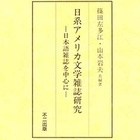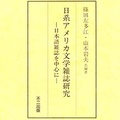その8>>
4.『NY文藝』の意義
『NY文藝』の意義の一つはこの雑誌が日系日本語文学の歴史において、東海岸で発行された唯一の文芸同人誌であったことである。
アメリカの経済と文化の中心地であるニューヨークの日本人・日系人の歴史は決して新しくはない。しかし彼らは文学活動という点では極めて消極的であった。日系文学の歴史はカリフォルニアを中心とした西海岸の文学活動の歴史であったといってよい。このような文学史的状況の中で、戦後、20年間にわたって発行された『NY文藝』は、その後期では不定期な発行ではあったけれども、東海岸におけるほとんど唯一の文学活動が生んだ大きな成果であり、日系日本語文学へのニューヨークからの大きな貢献であった。
ロサンゼルスで発行された『南加文藝』とともに、『NY文藝』が戦後の日本語文学を支えたことは十分評価されなければならない。
『NY文藝』の同人とこの雑誌の内容の特徴も西海岸の文芸誌に見られないものである。
同人の特徴はその多様性にある。ニューヨークに再定住した帰米二世を主力として、戦前からの居住者、かつての南米移民、留学生、領事、戦後移住者など多彩な人々が同人になっている。したがってこれらの人々が描く世界も多様なものとなる。強制収容所生活や日本文化を生きる一世も描かれるが、戦後のアメリカの多民族社会における人間関係、そこに見られる根深い人種差別などがよく取り上げられる。ニューヨークにおける「日系人のハーレム」を描く貴重な作品もある。戦後の政治情勢の変化を受けて、反戦平和も重要なテーマとなる。
このように『NY文藝』には多民族社会を背景とした、社会意識の強い作品が多い。また物語の世界はアラスカ、南米へと広がっている。『NY文藝』の同人と雑誌内容におけるこのような特徴点は従来の日系日本語文学の世界を大きく変化させ、拡大するものである。
また文学的完成度という観点から同人の作品を見てみると、すでに前章で示したように、そのばらつきはかなり大きいが、あべよしおの多くの作品と秋谷一郎の短編は優れた作品としてこれからも長く読まれるべきものである。西茂樹、花江マリオ、伊藤新子、相馬真知子、桜庭ケイの作品の中にも優れたものがある。これらはすべて日系文学への貴重な貢献である。
『NY文藝』は第11号をもって廃刊となった。その理由は同人の高齢化が進み、ふさわしい後継者が得られなかったこと、世代の違いにより文学観の相違が大きくなって同人組織の維持が難しくなったこと、財政的負担が大きすぎたことなどであった。
これからの日系日本語文学を担うのは戦後の移住者たちである。現在、彼らによってカリフォルニアでは2つの同人文芸誌が発行されている。『平成』(1989-)と『新植林』(1990年創刊の『移植林』を継承)である。
ニューヨークでも文芸誌の創刊が期待されるけれども、文学に理解のあった『ニューヨーク日米新聞』が1993年に廃刊となり、それに代わる文学作品発表の場がない現在、悲観的にならざるをえない。
* 篠田左多江・山本岩夫共編著 『日系アメリカ文学雑誌研究ー日本語雑誌を中心にー』 (不二出版、1998年)からの転載。
© 1998 Fuji Shippan




